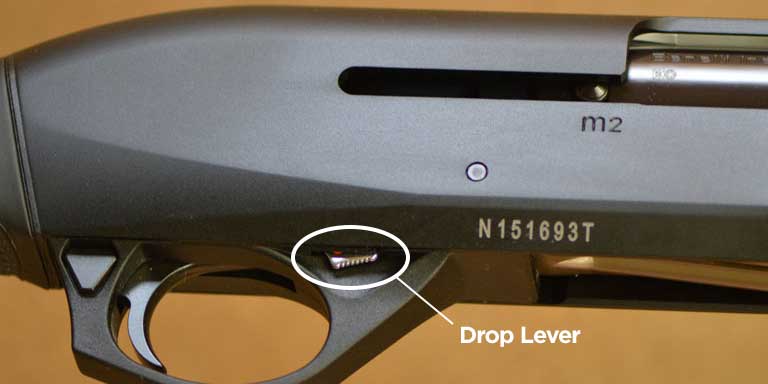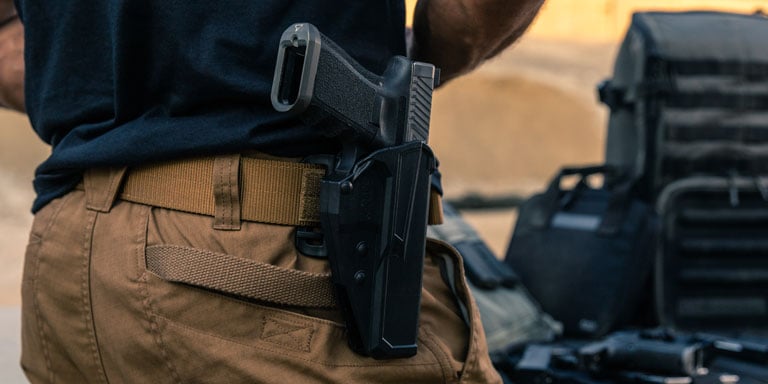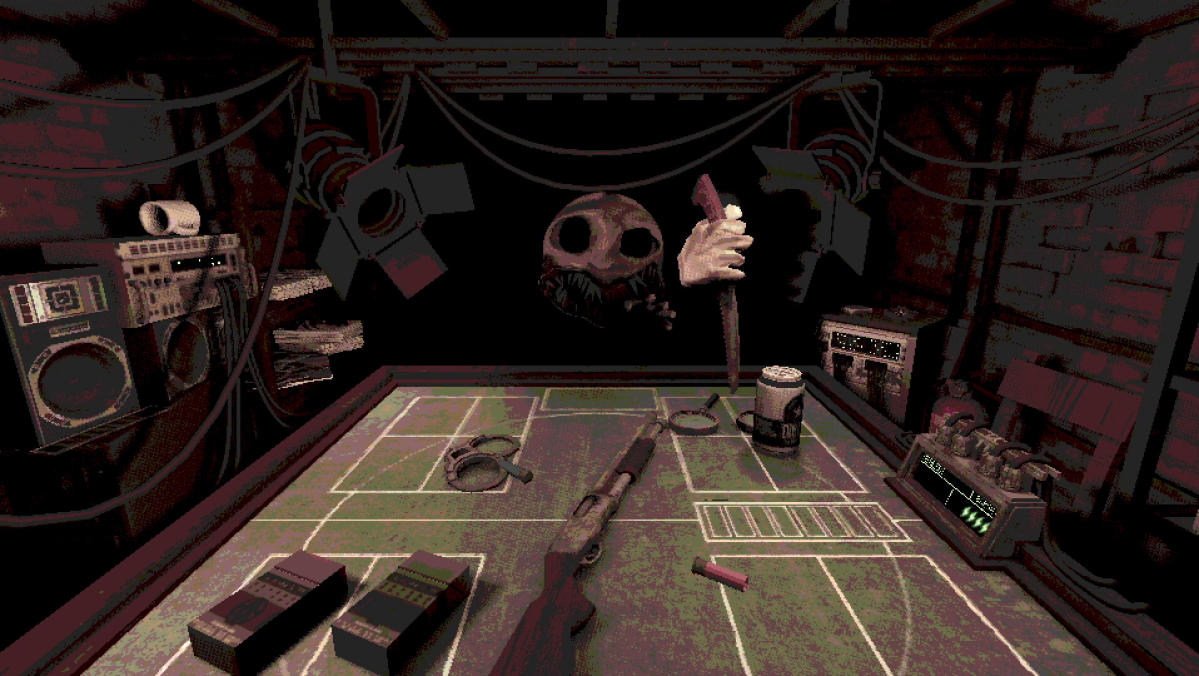Shotgun Basics: Identifying parts and functions Tactical Experts TacticalGear.com
Shotguns are a distinctive category of firearms. This guide will help you identify the parts and functions of single-barrel, double-barrel, pump-action and semi-automatic shotguns.
Helpful
 Shotguns are the only category of weapons that can launch multiple projectiles with a single discharge. The diversity of projectiles a shotgun can fire makes it an adaptable and unique weapon. There are three common types of shotgun shell.
Shotguns are the only category of weapons that can launch multiple projectiles with a single discharge. The diversity of projectiles a shotgun can fire makes it an adaptable and unique weapon. There are three common types of shotgun shell.
The type of shell selected will vary based on the weapon’s intended purpose. If you’re hunting for small game such as waterfowl, birdshot may be the best shell to use. This load will contain fifty or more small, round metal projectiles which, when fired, will create a shot pattern. This pattern Increases the odds of hitting a moving target without over-penetration.
If you’re hunting a larger animal, buckshot is the preferable shell to use. The load will contain nine or more large, round metal projectiles, which provide much greater stopping power with more penetration.
The final class of ammunition is the rifled slug. In effect, this shell turns a shotgun into a rifle, as the shell contains one large bullet with spiral grooves on the sides. These grooves cause the bullet to spin while traveling through the smooth-bore barrel of a shotgun, increasing its accuracy.
Single & Double-Barrel Shotguns
There are three main types of shotguns based on the weapon’s action, or loading mechanism. The first type is the manually loaded single or double-barrel shotgun.
The actionBoth single and double-barrel shotguns are usually break-actions, meaning they pivot, opening at the breech, exposing the firing chambers and allowing them to be manually loaded by dropping a shell in the chamber.
Side latch or push buttonLocated behind the hammer, this mechanism is either a side latch or push button that allows the action to open. Many modern shotguns also have a safety lever right behind the hammer.
The trigger and trigger guardA single-shot shotgun will have one trigger, while a double-barrel will usually have two triggers — one for each barrel. However, some double-barrel shotguns only have one trigger, but also have a barrel selector lever. The trigger guard surrounds either the single or double trigger system, preventing unintentional contact with the trigger and possible accidental discharge.
The hammerSingle-shot shotguns will have one hammer while double-barrel shotguns will usually have two. Many models are single-action, meaning the shooter has to manually cock the weapon by pulling back the hammer(s) until they lock. Some double-barrel shotguns have no hammer showing and the weapon is automatically cocked by the force of the shooter opening the break-action to reload.
The barrelA single-shot shotgun will usually have a smooth bore barrel. This means the barrel does not have the lands and grooves present in a rifle barrel. Some double-barrel shotguns will have one smooth-bore barrel and one rifled barrel, for use exclusively with rifled slugs.
The barrel length depends on the purpose of the weapon. The standard barrel length is between 26-28 inches. Weapons designed to shoot fast-flying waterfowl can be a couple of inches longer. Police riot shotguns need to be maneuverable in close quarters, so their barrel length is usually shorter (18-20 inches).
Extractors and ejectorsMost single and double-barrel shotguns have an extractor mechanism that lifts the spent shell casing partially out of the chamber when the action is opened. This allows the shooter to easily remove and replace the shells. Many newer models (especially double-barrels) also have ejectors. When the action is opened quickly, the spent shells are completely ejected from the weapon, allowing for quicker reloads.
Pump Action Shotguns
 The pump-action shotgun is faster at cycling additional rounds than break-action models, making it a favorite with many hunters. It’s best known as the traditional long gun of law enforcement. Often referred to as the police riot gun, its compact size and awesome firepower have made it a favorite with police for many years.
The pump-action shotgun is faster at cycling additional rounds than break-action models, making it a favorite with many hunters. It’s best known as the traditional long gun of law enforcement. Often referred to as the police riot gun, its compact size and awesome firepower have made it a favorite with police for many years.
The actionThe pump-action shotgun works on the same principle as a lever-action rifle: once the weapon is fired, the shooter pulls back on the fore-end grip, sliding it back. This opens the chamber, ejects the spent shell and allows the shell-carrier to raise the next shell into the loading position. As the shooter pushes the fore-end grip forward, the bolt moves forward, pushing the new shell into the chamber. Once the chamber is closed, the shooter is ready for their next shot.
The butt plateThe rearmost portion of the weapon will either be the butt plate or a more shock-absorbing recoil pad. The butt plate is held against the shooter’s shoulder, transferring the shotgun’s recoil force to the shooter.
The stock & combThe stock may be made of wood or a synthetic material. It provides three of the four points of contact between weapon and shooter: the butt, the comb and the grip. The butt rests on the shooter’s shoulder. The comb contacts the shooter’s cheek; this contact of the comb and the cheek is also known as the weld. The shooter’s grip can either be high on the stock or on a pistol grip, allowing the shooter to grasp the weapon.
The trigger guard and safetyJust like on single and double-barrel shotguns, the trigger guard surrounds the trigger, preventing unintended contact. The safety switch on many pump shotguns is built into the back of the trigger guard. The safety is a button that can be pushed from either side of the weapon. Making the weapon safe requires pushing this button into the “safe” position. Most safeties will show a red side of the button if the weapon is in fire mode, but don’t depend on this, as every weapon is different.
The safety may also be located on the top and rear of the weapon’s receiver. This type of safety is usually a slide lever — again, it usually shows a red dot when the weapon is in the fire position. Always use caution; a weapon’s safety is a mechanism, and it can fail.
The action releaseThe action release is usually a button that is either built into or in front of the trigger guard. This button allows the action to be opened. It is used to either verify that a weapon is empty or to unload the weapon.
The tubular magazineThe pump-action shotgun has a tubular magazine that runs parallel to the barrel. The magazine’s length will vary depending on the quantity of ammunition the weapon can legally hold. Some police riot guns have magazine extenders that are as long as the barrel, holding five or more rounds.
Semi-Automatic Shotguns
The semi-automatic shotgun is the most popular shotgun for hunting and has gained popularity with law enforcement. The simplicity of its operation and the sheer speed of its second and third shots far outpace other shotguns. Once loaded and charged, the shooter can fire the weapon as fast as they can pull the trigger until the magazine is empty.
The actionThis weapon’s operation is similar to a semi-automatic rifle. When it is fired, the bolt is forced rearward under spring tension, both extracting and ejecting the spent shell. The compressed spring then forces the bolt forward. The shell carrier elevates a fresh shell from the magazine tube. The bolt then pushes the shell into the chamber. This entire sequence only takes a second, after which the shooter is ready for their next shot.
Every semi-automatic shotgun will have its own distinctive features. Because of this, it’s not practical to name every possible button or lever for every model of semi-automatic shotgun. One good example, though, is the cartridge drop lever on a Benelli shotgun.
 The Benelli does not cycle a shell into the chamber by pulling and releasing the charging handle as most other semi-automatic shotguns do. A drop lever button must be depressed first; then the weapon can be loaded by pulling the bolt handle to the rear and releasing it. It’s important for the shooter to read the owner’s manual and learn the proper operation that is unique to their weapon.
The Benelli does not cycle a shell into the chamber by pulling and releasing the charging handle as most other semi-automatic shotguns do. A drop lever button must be depressed first; then the weapon can be loaded by pulling the bolt handle to the rear and releasing it. It’s important for the shooter to read the owner’s manual and learn the proper operation that is unique to their weapon.
Shotguns serve many purposes, including military and law enforcement applications, hunting, home defense and competitive shooting. Choosing the right shotgun will depend on its intended purpose and the shooter’s preference. In the hands of a practiced and skilled shooter, a shotgun is a formidable weapon.
Did you find this article helpful?
Helpful
Related Articles
Second Amendment Sanctuary Reviewed: Every U.S. State and County
We cover the basics of Second Amendment sanctuary and detail the sanctuary status of every state and county, nationwide.
Regulations
164 others found this helpful
How to Choose a Gun Holster
Choosing a holster is no easy task. From retention methods to material, we’ll help you find the right one for your gun.
Buyer’s Guides
131 others found this helpful
Handgun Basics: Identifying parts and functions
Get a better understanding of handguns by learning to identify parts and functions both revolvers and semi-automatics.
128 others found this helpful
Why You Should Use a Shotgun for Home Defense
Looking for the perfect home defense weapon? Here’s our case for picking a shotgun as your weapon of choice.
128 others found this helpful
Ammo 101
Choosing ammo can be overwhelming, so we laid out the basics regarding the most common types of ammunition available.
Buyer’s Guides
101 others found this helpful
Gun Cleaning and Maintenance Basics
Proper cleaning and preventative maintenance is essential to keep your firearms functioning safely and reliably.
Skills
62 others found this helpful
We cover the basics of Second Amendment sanctuary and detail the sanctuary status of every state and county, nationwide.
Regulations
164 others found this helpfulChoosing a holster is no easy task. From retention methods to material, we’ll help you find the right one for your gun.
Buyer’s Guides
131 others found this helpfulGet a better understanding of handguns by learning to identify parts and functions both revolvers and semi-automatics.
128 others found this helpfulLooking for the perfect home defense weapon? Here’s our case for picking a shotgun as your weapon of choice.
128 others found this helpfulChoosing ammo can be overwhelming, so we laid out the basics regarding the most common types of ammunition available.
Buyer’s Guides
101 others found this helpfulProper cleaning and preventative maintenance is essential to keep your firearms functioning safely and reliably.
Skills
62 others found this helpful
Literally Mindblowing Gameplay. 15 to 20-minute intense playtime. Enter the arena, go three rounds against The Dealer, and walk away with the prize.
This site only collects related articles. Viewing the original, please copy and open the following link:Shotgun Basics: Identifying parts and functions Tactical Experts TacticalGear.com















































































































































































